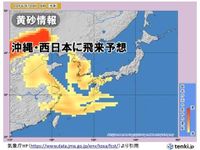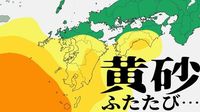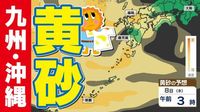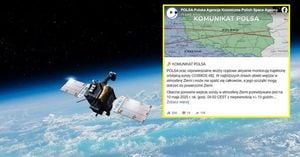As the season transitions into May, residents of western Japan are bracing for a wave of yellow dust expected to arrive over the next few days. The Japan Meteorological Agency has issued warnings that from May 7 to May 8, 2025, regions including Kyushu, Chugoku, and Shikoku will experience the effects of this natural phenomenon, which originates from dust storms in the deserts of mainland China.
According to the agency, the shadow of yellow dust was already covering parts of Kyushu and Shikoku by the morning of May 7, and it is expected to continue spreading across western Japan, including the Chugoku region, through May 8. After a brief respite, the yellow dust is predicted to return on May 10, necessitating continued vigilance from residents.
The concentration of yellow dust anticipated during this period is expected to be low. However, the potential for reduced visibility, dirt accumulation on vehicles and laundry, and health impacts remains a cause for concern. The agency advises that while the dust may not be heavy, caution is still warranted.
Yellow dust, or "kōsai" in Japanese, is a weather phenomenon caused by fine particles of sand and dust lifted from arid regions, particularly the Taklamakan and Gobi deserts. When these particles travel long distances, they can affect air quality and visibility, leading to various health issues.
Health experts warn that exposure to yellow dust can trigger allergic reactions in the eyes, nose, and skin. Symptoms such as eye itching, conjunctivitis, runny nose, and sneezing are common, particularly on days when dust concentrations are high. The connection between yellow dust and respiratory diseases is also alarming. Individuals with asthma or other respiratory conditions should take extra precautions during dust events, as their symptoms may worsen.
In addition to respiratory issues, there is evidence linking yellow dust to circulatory diseases. Reports indicate that increased levels of yellow dust correlate with a rise in ambulance transports for conditions such as cerebral infarction and myocardial infarction. Vulnerable populations, including the elderly and those with pre-existing health conditions like diabetes or chronic kidney disease, are especially at risk and should be particularly cautious.
To mitigate the health effects of yellow dust, experts recommend several preventive measures. Staying informed about daily yellow dust forecasts is crucial. When dust levels are high, limiting outdoor activities can help reduce inhalation of harmful particles. This is especially important for individuals with respiratory or circulatory issues, as well as children and the elderly, who should adjust their activities according to their health conditions.
When possible, residents are encouraged to dry laundry and bedding indoors to avoid contamination from yellow dust. If outdoor exposure cannot be avoided, wearing a mask, such as a non-woven mask, can provide some protection. It is essential to choose a mask that fits properly to minimize any gaps that could allow dust to enter.
Historically, the arrival of yellow dust peaks in March and April, with averages of 13.7 days and 19.1 days respectively. In May, the average is still significant at about 8.7 days, making it a month where caution is still necessary. By June, the frequency drops dramatically to just 0.5 days, and from July to September, yellow dust events are rarely observed.
As the dust clouds move across the sky, many residents are reminded of the seasonal nature of this phenomenon. While the current forecast indicates a low concentration of yellow dust, the unpredictable nature of weather patterns means that residents should remain vigilant and prepared for any changes.
In light of these developments, local authorities and health organizations are working to disseminate information and resources to help residents understand and cope with the impending yellow dust. Community awareness campaigns aim to educate the public on the importance of monitoring air quality and taking appropriate precautions.
With the potential for health impacts and the disruption of daily life, the upcoming days will be a test of preparedness for those in affected areas. As the yellow dust makes its way across western Japan, residents are reminded to stay informed and take necessary precautions to protect their health and well-being.






